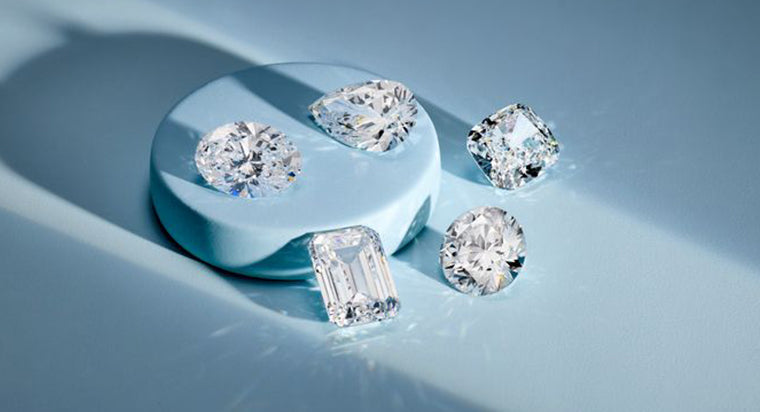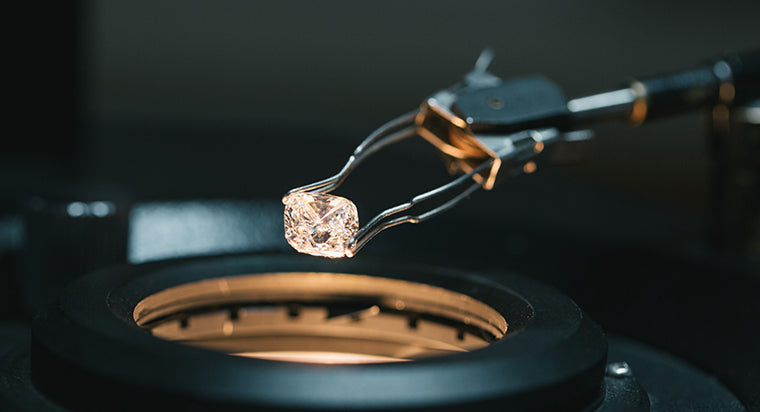Princess Cut Diamonds & Their History

For centuries, diamonds have borne the label “a girl’s best friend.” Men also once loved diamonds; they would hack away with pickaxes in mines, hoping to strike it rich with either gold or diamonds. Of course, no diamond ever came straight out of the ground looking like the beautiful, refined stones we see in necklaces, bracelets, and engagement rings. It takes a great deal of polishing, buffing, and cutting to create stones worthy of jewelry creation. One of the most popular styles are the princess cut diamonds, which have a more square or rectangular top, or crown, and usually about 60-70 facets like those of their predecessor, the round brilliant diamond.
Arpad Nagy, a diamond cutter from London, England, created a version of princess cut diamonds in the early 1960’s, which means they are one of the newer cuts of diamonds. Nagy’s version of this style was the “profile” cut. Basil Watermeyer, a cutter from South Africa, patented a version of Nagy’s design in the 1970’s, which he called the “Barion cut.”
Other similar cuts of diamonds have since surfaced. The Ambar Diamond company introduced the “Quadrillion Cut” in the late 1970’s, and claimed a legal patent on it in the early 80’s. In 2013, Vinubhai Dhanani and Robert Forster received their own patent on another version of princess cut diamonds.The biggest difference in the patents of princess cut diamonds through their brief history is the number of facets they have, which could be 40-80 facets, depending on the patent or style in question.
How They Are Created
According to the Gemological Institute of America, there is not enough information on princess cut diamonds to create set specifications for examining and grading the stones. Manufacturers alter the facet patterns and shapes, and the final size of the diamond itself, and most consider each one an ideal cut diamond.
While princess cut diamonds go through the same refining process, they only lose about 20% of the rough diamond. The pavilions, or the cone-shaped bottoms of the diamonds, and the stone’s facets blend in with the inclusions or “flaws,” which creates a more unique glare in the light. Cutters shape the diamond as if making a traditional round brilliant-cut diamond, but instead of rounding off the diamond and smoothing each imperfection, they create symmetrical edges and sharp corners.
Round vs. Princess Diamonds
Round brilliant, diamonds are, well, round, and they have a brilliant shine. Their facet count changes from one piece of jewelry to another, and can vary drastically from the princess cut diamonds. As previously mentioned, the square-shaped jewels only lose about 20% of the rough diamond from which cutters create them. Round brilliant diamonds lose 40%-60% of the original stone, making them more valuable.
Because of the amount of the rough diamond remaining intact, things that people would consider flawed in round diamonds add to the beauty and shine of the princess cut diamonds. This does not mean that the diamonds have flaws, however. Quite the opposite, in fact; it means that you can see more of the jewel’s natural beauty, while, in a round diamond, the facet count must be more precise and created with more care than those the square diamonds.
Popularity & Engagement Rings
One of the reasons these square shaped diamonds are popular is their pricing. Depending on which retailer from which you purchase your jewelry, princess cut diamonds cost anywhere between 25% and 40% less than their round-cut counterparts. This is, in large part, because of how much of the rough diamond cutters save when designing these diamonds compared to the percentage wasted when making the round brilliant diamonds.
Another reason some people prefer the princess cut diamonds to other cuts is that they tend to appear bigger in the jewelry setting (bracelets, rings, etc.) than the rest of the diamond styles. They also make beautiful engagement rings, and an inexpensive alternative to other cuts.
Little differs in the way that jewelers construct jewelry with princess cut diamonds. They use tongs with more of an angle to avoid damaging or chipping off the corners of the stones. Then, just as with any other style and type of jewel, they make sure the diamond sits securely in the setting, the metal part of the jewelry.
In engagement rings, jewelers tend to opt for princess cut diamonds. They choose multifaceted stones that reflect well in the light, and arrange them in their setting without much cluttering metal that would obstruct the diamond’s shine. Jewelers usually make these engagement rings with either a single diamond or a large stone in the center with two smaller diamonds on either side. Some jewelers elaborate on these two ring styles by wrapping the entire band of the jewelry with tiny round or princess cut diamonds, creating beautiful, well-priced engagement rings.









